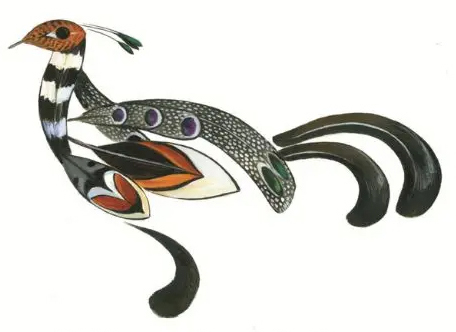Galliformes Specialist Group and Affiliated Societies

Galliformes Specialist Group and Affiliated Societies: Conference Proceedings
Date of this Version
1984
Document Type
Article
Citation
Perdix III: Gray Partridge and Ring-necked Pheasant Workshop (Campbellsport, Wisoconsin, United States, March 28-30, 1983)
Compilers and editors: Robert T. Dumke, Richard B. Stiehl, and Richard B. Kahl
Production supervisors: Gloria Wienke and Ruth L. Hine
Graphic artist: Richard Burton
Publisher: Wisconsin Department of Natural Resources, May 1984
Sponsors: Wisconsin Department of Natural Resources and University of Wisconsin-Green Bay
Abstract
Foreword
Opening remarks: How far we have come, Robert A. McCabe
Gray Partridge Ecology and Management
Grey partridge population dynamics: Comparisons between Britain and North America, G. Richard Potts
Changes in the composition of the autumn food of the partridge in western Finland over 20 years, Erkki Pulliainen
Body condition of gray partridge during fall and winter in Saskatchewan, Ross W. Melinchuk and John P. Ryder
Nesting biology of gray partridge in east-central Wisonsin, Kevin E. Church
Procedures for introducing gray partridge into unoccupied range in New York, Kevin E, Church, William F. Porter, and David E. Austin
Landowner and hunter attitudes toward gray partridge habitat improvement strategies, incentives, and harvesting mechanisms: A synopsism, Theresa A. Duffey
First invitational Gustav Pabst Hungarian partridge shoot, Daniel G. Olson
Ring-necked Pheaant Ecology and management
Early ACP and pheasant boom and bust! A historic perspective with rationale, William R. Edwards
Hen pheasant habitat use during reproduction in New York's Lake Plain, Robert C. Boyd and Milo E. Richmond
Comparison of techniques used to measure pheasant productivity in western new York, David E. Austin and Bruce Penrod
Pheasant nesting success with delayed hay mowing in Pennsylvania: Preliminary results, Fred E. Hartman and Rochelle Fisher
Responses and impact by pheasants on prairie-chicken sanctuaries in Illinois: A synopsis, Ronald L. Westermeier
Pheasant nesting ecology in relation to wheat farming, Warren D. Snyder
Pheasant nesting on restoration plots and associated cover types in South Dakota, Kenneth E. Solomon
Declining survival of ring-necked pheasant chicks in Illinois, Richard E. Warner
Habitat use and movements of Wisconsin pheasants during fall and winter, Ronald C. Gatti, Robert T. Dumke, and Charles M. Pils
Farmland Habitat Modeling and Management
Critical habitat components for gray partridge, Richard B. Stiehl
A gray artridge winter habitat model for the Great Lakes region, Kevin E. Church and Robin L. Viola
A draft habitat suitability index (HSI) model for gray partridge, Arthur W. Allen and Patrick J. Sousa
Pheasant habitat assessment and the PATREC model, Warren D. Snyder
The cooperative development of a private land wildlife habitat appraisal guide for Missouri: A synopsis, Edward A. Gaskins, David L. Ulrich, and John P. Graham
Interpreatation of pheasant habitat using satellite imagery, Diana L. cary, Elizabeth A. Cook, and Terry Barney
Intensive pheasant management on the Harlan County Reservoir: A synopsis, William L. Baxter and Alan K. Gehrt
Ohio's wldlife habitat restoration program: A synopsis, John J. Henry
Impacts of no-till farming on uploand wildlife, Nancy S. Basore, Richard E. Young, and James B. Wooley
The art of residual cover management in the Midwest: A commentary, Edward J. Frank
Associated Workshop Activities
Questionnaire survey results: Population status, harvest, management, and game farm programs for gray partridge and ring-necked pheasants in North America
PIK evaluation: Committee report on the 1983 set-aside program, Alfred Berner
Registrants


Comments
Copyright 1984, the authors of the respective items. Used by permission